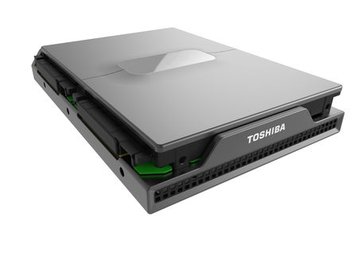Toshiba has launched an Ethernet-connected hybrid storage drive that handles object storage. The Key Value Performance drive, combines hard drives and solid state, with an onboard system on a chip (SoC) that makes the drive an independent resource in an object storage network.
The drive, launched at at this week’s OpenStack Summit 2015 in Vancouver, connects directly to the Ethernet infrastructure and runs Linux, to deliver object storage, instead of traditional ways of addressing storage. It builds on the Kinetic storage model announced by Seagate at the previous OpenStack show in Paris.
Forget blocks and files
Plugging into a Seagate Kinetic Open Storage compatible enclosure, the Toshiba Key Value P drive squeezes HDD, SSD, SoC and Ethernet connectivity into a 3.5 in form factor. Using the object storage model (as opposed to traditional block or file storage models), each of the drives is its own node in distributed storage architecture. Adding additional drives increases not only storage capacity but also the processing capabilities of the SoC embedded in each device.
Toshiba claims that the advantages of the Key Value Drive are manifold, from cost benefits found in elimination of the traditional storage management server, to advantages gained by not requiring different storage devices for different purposes. As the devices become more common, future benefits could include applications written specifically to take advantage of server offload or direct optimization of applications using the Linux OS running on the individual drive’s SoC.
By making use of the Open Kinetic interface Toshiba adds credibility to the interface as a standard for this class of drive, as well as being able to take advantage of the existing Open Kinetic hardware and APIs. Details on the Key Value drive can be found in a Toshiba whitepaper, and a selection of white papers and technology explainers that layout Toshiba’s approach to the object storage market can be found here.


